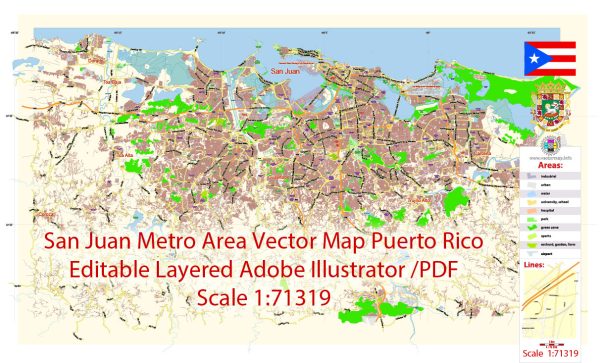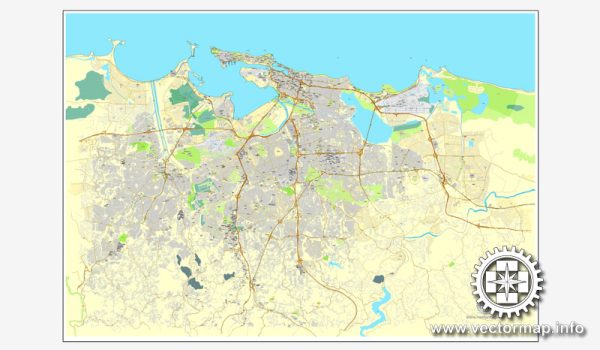San Juan, Puerto Rico, has a rich history of urban development that spans centuries and reflects the island’s complex cultural and political heritage. The city is one of the oldest European settlements in the Americas, with a history that predates the arrival of Christopher Columbus. Here is an overview of the key historical phases in the urban development of San Juan:
- Colonial Era (16th to 18th centuries):
- Foundation: San Juan was founded by Spanish explorer Juan Ponce de León in 1521 and quickly became a crucial outpost for the Spanish Empire in the Caribbean.
- Fortifications: Recognizing its strategic importance, the Spanish built robust fortifications to protect the city from attacks by European rivals and Caribbean pirates. The most famous of these is El Morro, a fortress overlooking the entrance to the San Juan Bay.
- Spanish Rule and Influence:
- Architecture: The architecture of San Juan reflects Spanish influence, with narrow cobblestone streets, colorful colonial buildings, and ornate churches.
- La Fortaleza: Built in the 1540s, La Fortaleza is the oldest executive mansion in continuous use in the Americas and served as the residence for the island’s Spanish governors.
- American Rule (Late 19th century to present):
- The United States Occupation (1898): After the Spanish-American War, Puerto Rico became a territory of the United States. This marked the beginning of a new era for San Juan.
- Urban Planning: American influences brought changes in urban planning and infrastructure development. Modernization efforts included the construction of roads, bridges, and other public works projects.
- 20th Century Development:
- Expansion: San Juan experienced significant population growth and urban expansion throughout the 20th century.
- Tourism Boom: In the mid-20th century, tourism became a major industry for Puerto Rico, leading to the development of hotels, resorts, and infrastructure to accommodate visitors.
- Contemporary Urban Challenges and Revitalization:
- Urbanization Challenges: Like many cities, San Juan faces challenges related to urbanization, including traffic congestion, infrastructure maintenance, and social inequalities.
- Revitalization Efforts: In recent years, there have been efforts to revitalize historic districts, promote sustainable development, and preserve cultural heritage.
- Cultural Heritage and UNESCO Recognition:
- Old San Juan: The historic district of Old San Juan is a UNESCO World Heritage Site, recognized for its well-preserved colonial architecture and cultural significance.
- Cultural Diversity: The city’s urban development is also shaped by its diverse cultural influences, including African, Indigenous, and European elements.
The urban development of San Juan reflects the island’s dynamic history, blending indigenous, Spanish, African, and American influences into a unique and vibrant urban landscape. Today, the city stands as a testament to its rich cultural heritage and historical significance in the Americas.




 Author: Kirill Shrayber, Ph.D.
Author: Kirill Shrayber, Ph.D.